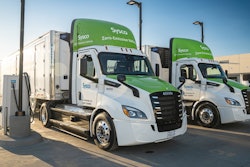
It is estimated that 1.3 billion metric tons of food are lost or wasted annually, translating to a financial loss of $1 trillion per year. And without significant changes, this problem is expected to grow to 2.1 billion metric tons and $1.5 trillion by 2030.
Staggering as these numbers might be, they do not take into account the hidden costs of food production, including labor, storage and salvage or the costs related to customer dissatisfaction, lost opportunities and inventory/stocking level imprecision.
One-third of all food produced for human consumption is lost due to wastage, which not only has significant financial implications, but also has environmental and social implications as well.
The commodities with the highest level of waste are:
● Fruits and vegetables (45%)— equivalent to 3.7 trillion apples
● Roots and tubers (45%) – equivalent to 1 billion bags of potatoes
● Fish and seafood (35%) – equivalent to 3 billion Atlantic salmon
● Meat (20%) – equivalent to 75 million cows
Food waste and loss is pervasive throughout the entire food value chain – from farm to fork. Harvesting, manufacturing, packaging, transporting and stock rotation as well as the consumers’ tendency to overbuy all contribute to excessive waste and spoilage.
While there are a lot of variables impacting food wastage, approximately 7-15% of the wastage happens during transport. There are many factors that could impact the inside temperature of a container – fluctuating regional outside temperatures throughout the chain, how full the container is, or even the opening of a container door. Even at 40°F, food quality can begin to deteriorate, and bacteria can begin to grow in just one hour.
Optimizing equipment and utilizing technology to mitigate perishable wastage occurring during transport is of utmost importance.
In fact, the use of telematics technology in the intermodal supply chain allows for greater collaboration, increased transparency and real-time information of the exact location and inside temperature of a container. Software using advanced algorithms provides notification of any significant events on route as well as predictive analysis that enables the planning of maintenance and repair before an event occurs.
A forward-looking strategy should include technology and telematics that will enable customers to optimize their fleet, increase uptime and control conditions that protect their cargo.
Some food wastage is inevitable, but utilizing available technology will help to reduce waste and ensure perishables make it to their destination intact.


















